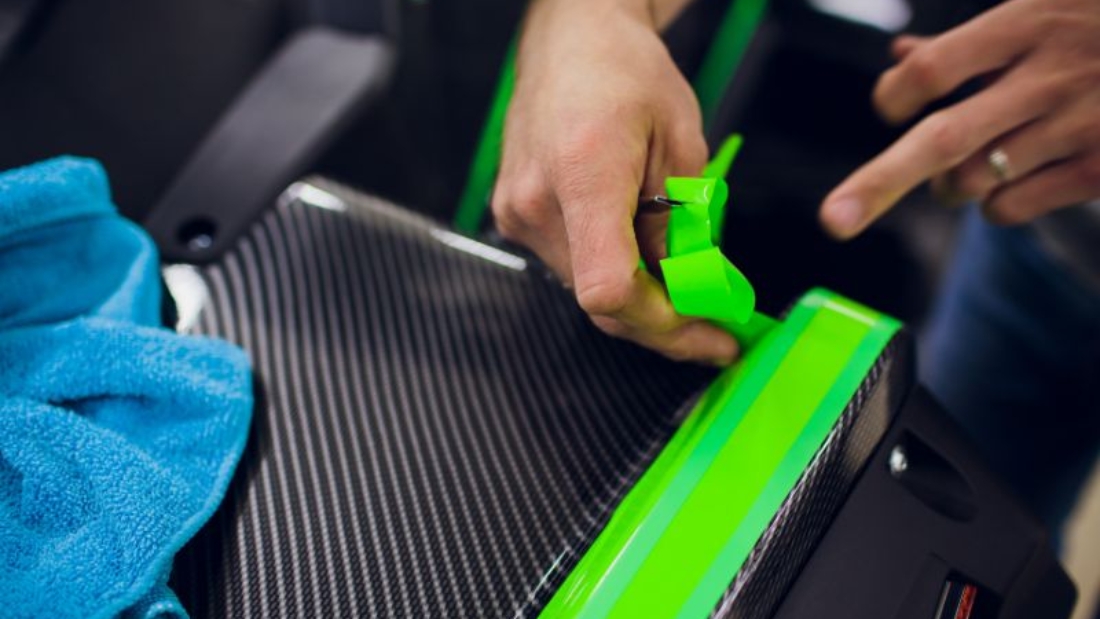Introduction
Car wrapping has emerged as a fascinating and dynamic way to transform the appearance of vehicles, giving them a fresh and personalized look. But what goes on behind the scenes during the car wrapping process? How do these eye-catching designs come to life, and what makes them stand out on the road? In this article, we will take you behind the scenes to unveil the artistry of vehicle transformation through car wrapping, exploring the step-by-step process and the creative techniques that make it all possible.
Understanding Car Wrapping and Its Purpose
Car wrapping is the process of applying a vinyl film to the exterior surfaces of a vehicle. The vinyl film comes in various colors, patterns, and finishes, providing endless possibilities for customization. Car wrapping serves both aesthetic and practical purposes, from personalizing a car’s appearance to protecting its original paint from scratches and UV damage.
Preparing the Canvas – Surface Cleaning and Inspection
Before diving into the car wrapping process, the vehicle’s surfaces must be thoroughly cleaned and inspected. The cleaning process ensures the removal of any dirt, wax, or contaminants that could interfere with the adhesion of the vinyl. Additionally, the inspection helps identify any imperfections or damages on the car’s surface that may need addressing before wrapping.
Designing the Wrap – Where Art Meets Innovation
This is the creative phase where the artistry of vehicle transformation truly shines. Skilled graphic designers work closely with clients to understand their vision and translate it into a stunning car wrap design. Using specialized software, they carefully lay out the graphics, patterns, and logos, ensuring they align perfectly with the car’s contours and features.
Printing and Preparing the Vinyl Film
Once the design is finalized, it’s time to bring it to life on the vinyl film. Large-format printers with high-resolution capabilities produce the intricate graphics, ensuring vibrant colors and sharp details. The printed vinyl film is then laminated for extra protection against UV rays, abrasion, and other environmental factors.
Application – Precision and Finesse
The application of the vinyl film is a delicate and precise process that requires skill and finesse. Professional installers carefully position the vinyl over the vehicle’s surfaces, using heat guns and squeegees to ensure a smooth and bubble-free application. They pay close attention to intricate curves, edges, and seams, meticulously wrapping around them for a seamless finish.
Post-Installation Trimming and Finishing
After the vinyl is applied, the installers meticulously trim away excess material and precisely cut around the car’s features, such as door handles and mirrors. The attention to detail at this stage is crucial in achieving a flawless and polished look.
Quality Assurance and Customer Satisfaction
Before the car is handed back to the client, a thorough quality assurance process is conducted. The wrap is inspected for any imperfections, and any final touch-ups are made to ensure the highest level of customer satisfaction.
Conclusion
Car wrapping is a fascinating process that showcases the artistry and innovation behind vehicle transformation. From the creative design phase to the precision application, every step requires skill, attention to detail, and a passion for creating unique and eye-catching designs. The result is a personalized vehicle that turns heads and stands out on the road, reflecting the individuality and style of its owner. So, the next time you see a beautifully wrapped car on the streets, you’ll know that behind the scenes, there’s a team of talented professionals who turned imagination into reality, one wrap at a time.
FAQs
How long does the car wrapping process typically take?
The duration of the car wrapping process depends on the complexity of the design and the size of the vehicle. In general, it can take anywhere from a few hours to a few days.
Can car wraps be removed without damaging the original paint?
Yes, high-quality car wraps can be removed without causing damage to the underlying paint. Professional removal is recommended for the best results.
How long will a car wrap last before it needs replacement?
With proper care and maintenance, a well-installed car wrap can last anywhere from 3 to 7 years or even longer.
Can car wraps be customized with logos and branding for businesses?
Yes, car wraps are highly customizable and can include logos, branding elements, and other graphics tailored to suit the needs of businesses.
What type of care do car wraps require to maintain their appearance?
Car wraps should be hand-washed using a gentle car shampoo and a soft cloth or microfiber towel. Avoid using abrasive cleaning agents or brushes to preserve the wrap’s longevity and appearance.

